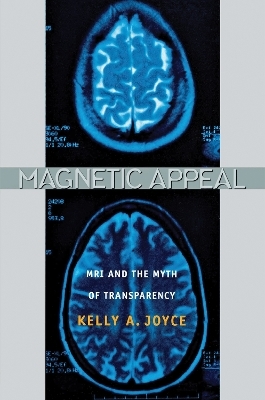
Magnetic Appeal
MRI and the Myth of Transparency
Seiten
2008
Cornell University Press (Verlag)
978-0-8014-7456-9 (ISBN)
Cornell University Press (Verlag)
978-0-8014-7456-9 (ISBN)
Offers an in-depth exploration of the science and culture of MRI, examining its development and emergence as an imaging technology, its popular appeal and acceptance, and its current use in health care.
Magnetic Resonance Imaging, not so long ago a diagnostic tool of last resort, has become pervasive in the landscape of consumer medicine; images of the forbidding tubes, with their promises of revelation, surround us in commercials and on billboards. Magnetic Appeal offers an in-depth exploration of the science and culture of MRI, examining its development and emergence as an imaging technology, its popular appeal and acceptance, and its current use in health care. Understood as modern and uncontroversial by health care professionals and in public discourse, the importance of MRI—or its supposed infallibility—has rarely been questioned.
In Magnetic Appeal, Kelly A. Joyce shows how MRI technology grew out of serendipitous circumstances and was adopted for reasons having little to do with patient safety or evidence of efficacy. Drawing on interviews with physicians and MRI technologists, as well as ethnographic research conducted at imaging sites and radiology conferences, Joyce demonstrates that current beliefs about MRI draw on cultural ideas about sight and technology and are reinforced by health care policies and insurance reimbursement practices. Moreover, her unsettling analysis of physicians' and technologists' work practices lets readers consider that MRI scans do not reveal the truth about the body as is popularly believed, nor do they always lead to better outcomes for patients. Although clearly a valuable medical technique, MRI technology cannot necessarily deliver the health outcomes ascribed to it.
Magnetic Appeal also addresses broader questions about the importance of medical imaging technologies in American culture and medicine. These technologies, which include ultrasound, X-ray, and MRI, are part of a larger trend in which visual representations have become central to American health, identity, and social relations.
Magnetic Resonance Imaging, not so long ago a diagnostic tool of last resort, has become pervasive in the landscape of consumer medicine; images of the forbidding tubes, with their promises of revelation, surround us in commercials and on billboards. Magnetic Appeal offers an in-depth exploration of the science and culture of MRI, examining its development and emergence as an imaging technology, its popular appeal and acceptance, and its current use in health care. Understood as modern and uncontroversial by health care professionals and in public discourse, the importance of MRI—or its supposed infallibility—has rarely been questioned.
In Magnetic Appeal, Kelly A. Joyce shows how MRI technology grew out of serendipitous circumstances and was adopted for reasons having little to do with patient safety or evidence of efficacy. Drawing on interviews with physicians and MRI technologists, as well as ethnographic research conducted at imaging sites and radiology conferences, Joyce demonstrates that current beliefs about MRI draw on cultural ideas about sight and technology and are reinforced by health care policies and insurance reimbursement practices. Moreover, her unsettling analysis of physicians' and technologists' work practices lets readers consider that MRI scans do not reveal the truth about the body as is popularly believed, nor do they always lead to better outcomes for patients. Although clearly a valuable medical technique, MRI technology cannot necessarily deliver the health outcomes ascribed to it.
Magnetic Appeal also addresses broader questions about the importance of medical imaging technologies in American culture and medicine. These technologies, which include ultrasound, X-ray, and MRI, are part of a larger trend in which visual representations have become central to American health, identity, and social relations.
Kelly A. Joyce is Assistant Professor of Sociology at the College of William and Mary.
1. MRI as Cultural Icon
2. Painting by Numbers: The Development of Magnetic Resonance Imaging and the Visual Turn in Medicine
3. Seeing Is Believing: The Transformation of MRI Examinations into Authoritative Knowledge
4. The Image Factory: Work Practices in MRI Units
5. The Political Economy of Magnetic Resonance Imaging
6. A Sacred Technology? Theorizing Visual Knowledge in the Twenty-first Century
Appendix: Research Methodology
References
Index
| Verlagsort | Ithaca |
|---|---|
| Sprache | englisch |
| Maße | 152 x 229 mm |
| Gewicht | 454 g |
| Themenwelt | Medizinische Fachgebiete ► Radiologie / Bildgebende Verfahren ► Kernspintomographie (MRT) |
| ISBN-10 | 0-8014-7456-6 / 0801474566 |
| ISBN-13 | 978-0-8014-7456-9 / 9780801474569 |
| Zustand | Neuware |
| Haben Sie eine Frage zum Produkt? |
Mehr entdecken
aus dem Bereich
aus dem Bereich
Lehrbuch und Fallsammlung zur MRT des Bewegungsapparates
Buch | Hardcover (2020)
mr-verlag
219,00 €


